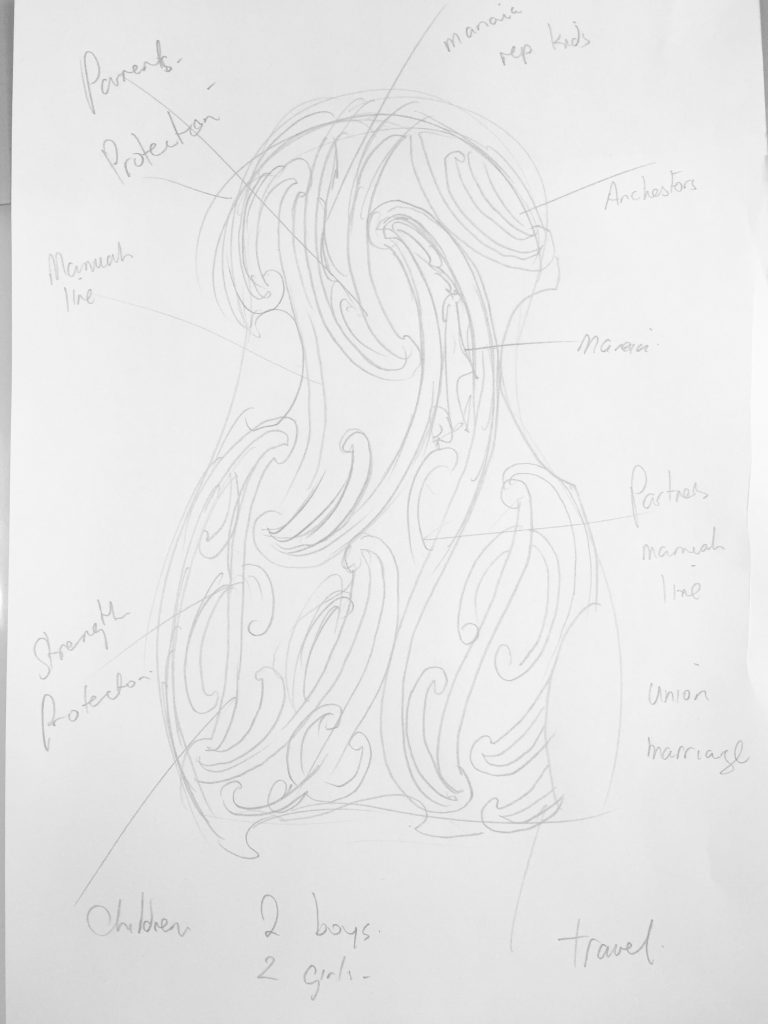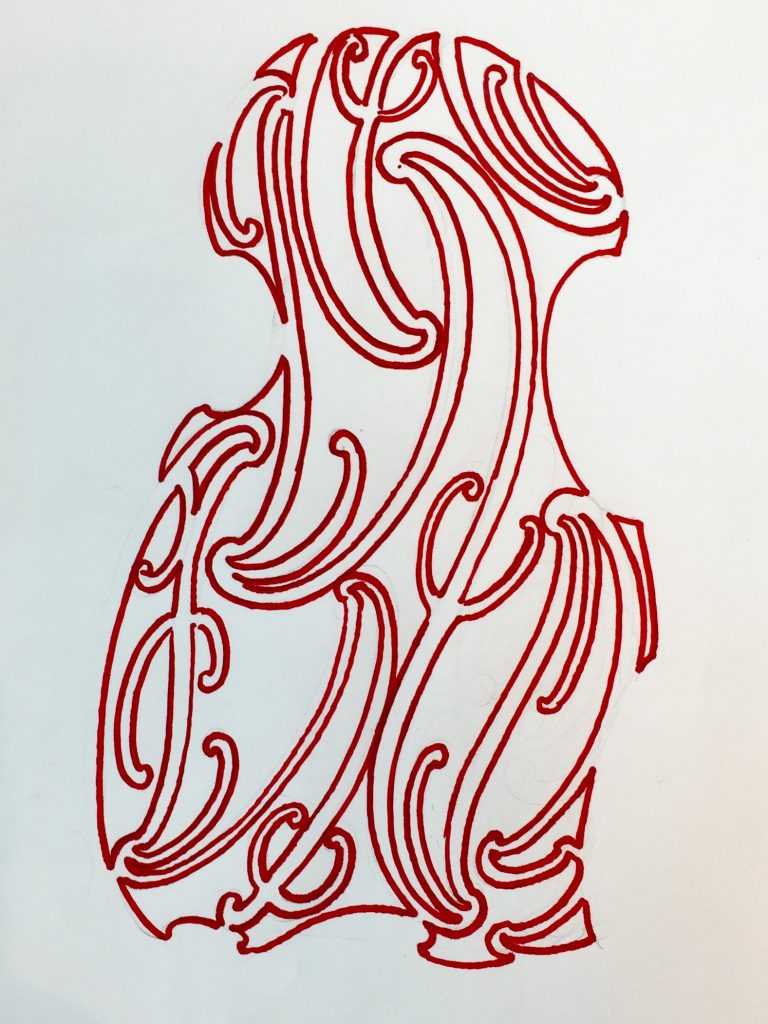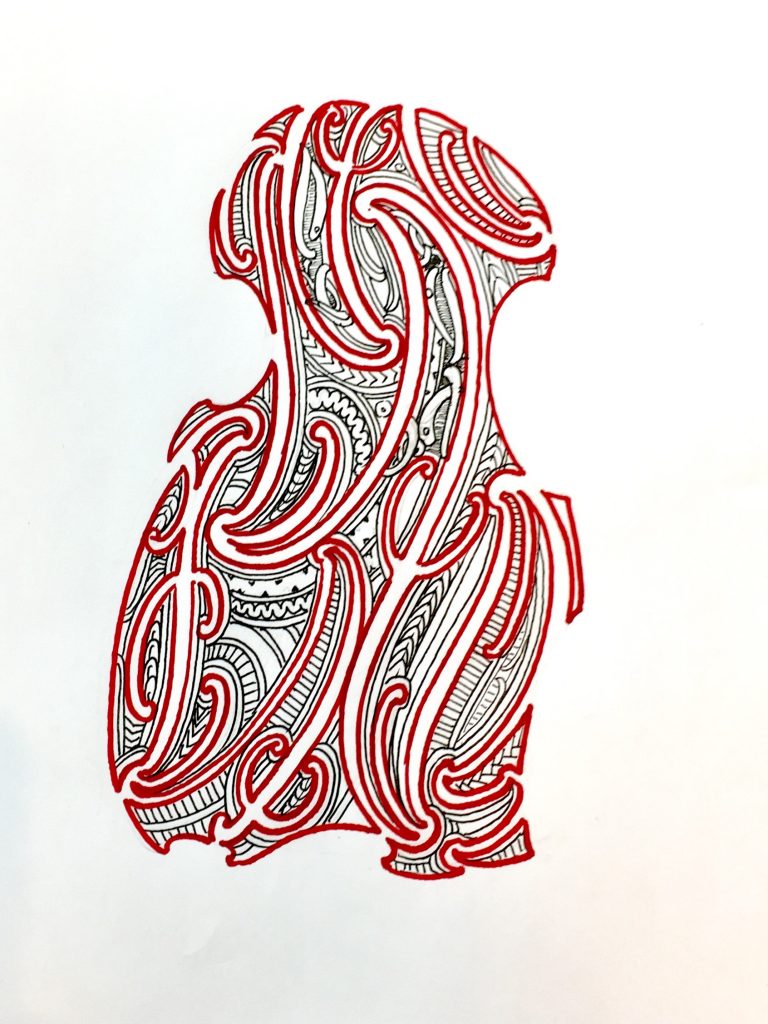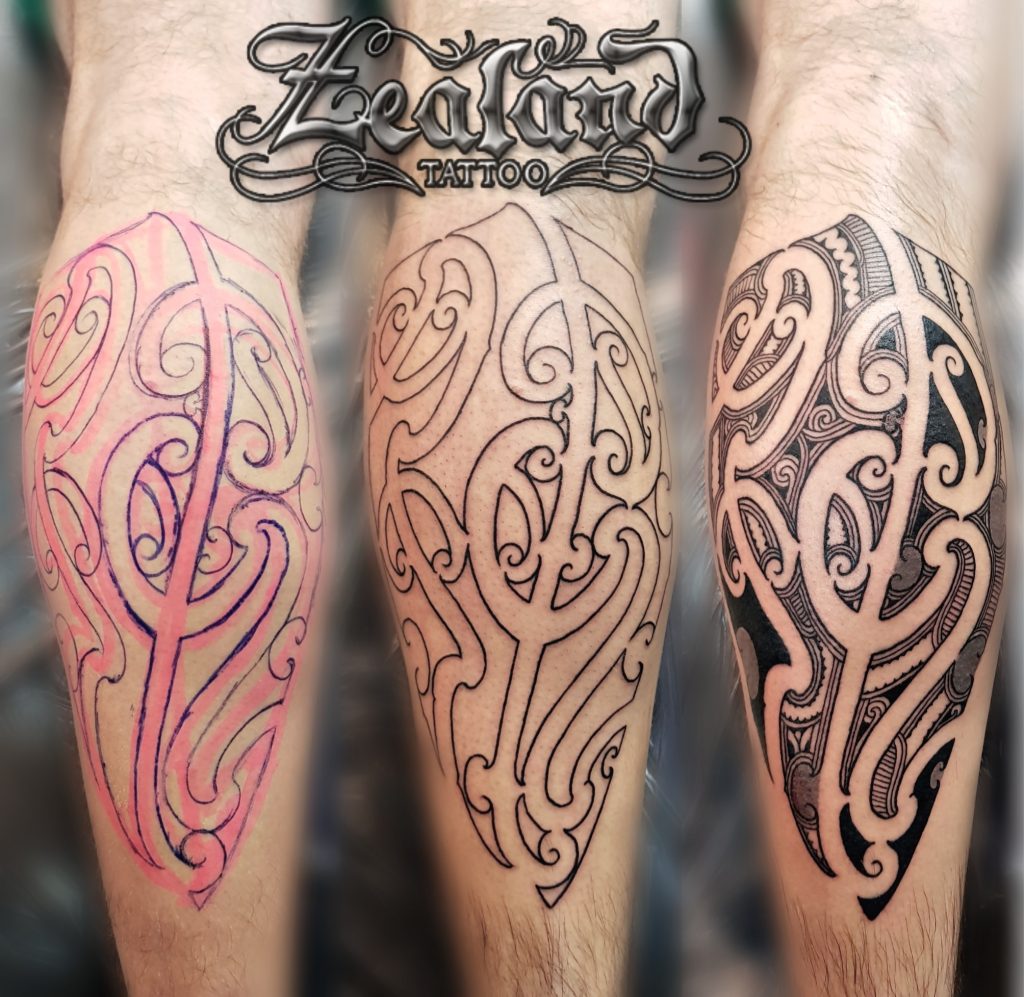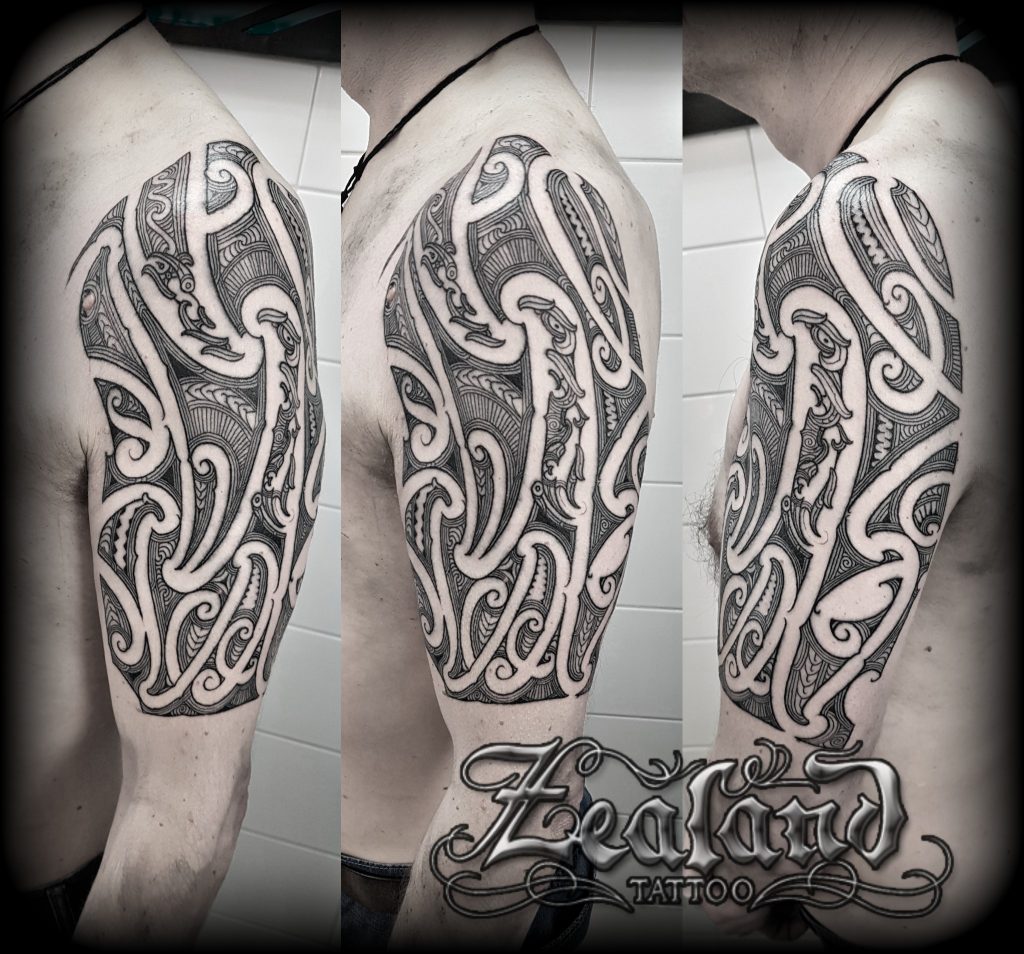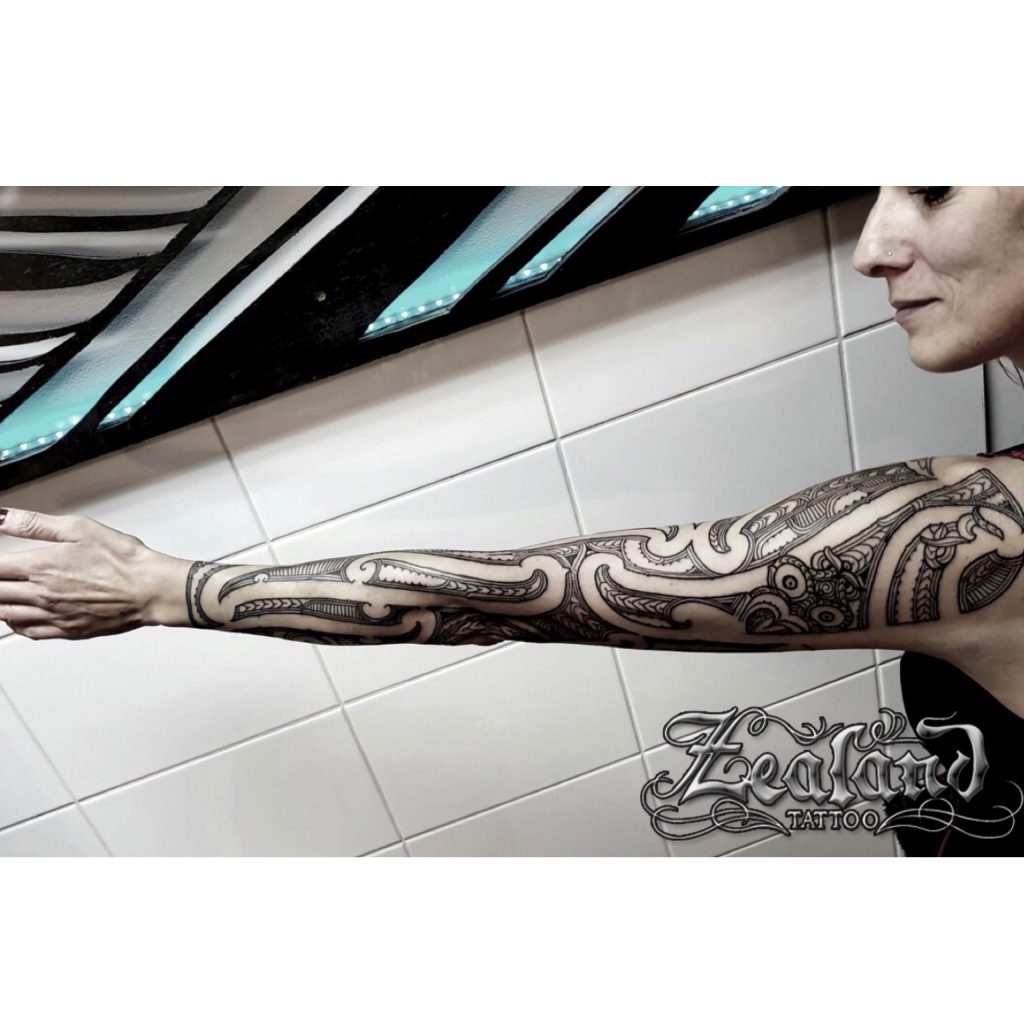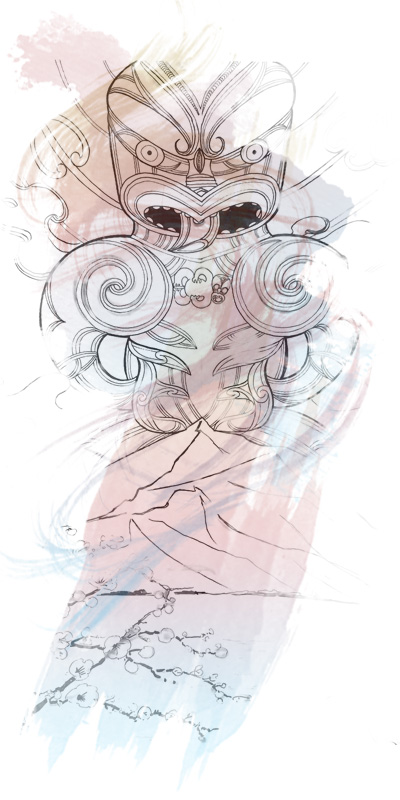Maori Tattoo: The Definitive Guide to Ta Moko
We take great pride in producing traditional Maori tattoo art
In the past, Ta Moko tattoos traditionally represented particular Maori tribes but for those of different heritage/ancestry – this is not the case. However, the tattoo can have a range of other legitimate meanings, such as your family (physical lives), prosperity, travel, strength, your career path etc.
How you tell your story in KIRITUHI TATTOO otherwise known as TA MOKO
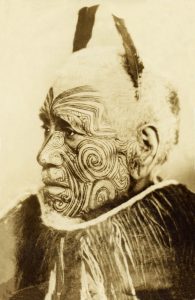
Historic Ta Moko image
Kiri means Skin and Tuhi means Art, we generally tattoo the body and arm areas on our customers so it will be defined as Kiri Tuhi rather than Ta Moko was reserved for the face only.
All Maori design is made up of a number of essential design elements.
Main Manawa Lines are the skin looking lines in your maori tattoo, MANAWA is the Maori word for Heart and represents Your Life, your Life Journey and your time spent on Earth.
Main Korus coming off the Manawa Lines are used represent people and people groups .
Korus are based off the tiny new growth shoots on the New Zealand Fern plant and represent New Life and New Beginnings.
When you add every koru off your Manawa line you can be adding the important people in your life journey , Mothers , Fathers, Grandparents, Children , siblings , Loved ones friends family and so on.
Different Infill Patterns ( Black Areas ) in your tattoo and their meanings
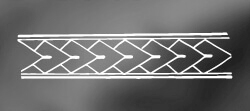 |
Pakati:Dog skin cloak, representative of warriors/battles/courage and strength. |
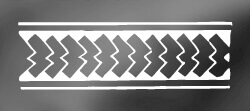 |
Hikuaua:Representative of Taranaki (a region of New Zealand) as well as prosperity, mackerel tail. |
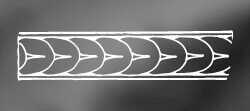 |
Unaunahi:Fish scales that represent abundance and health. |
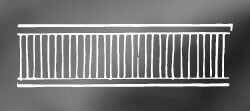 |
Ahu ahu mataroa:Shows talent and achievement in athleticism or sport and can also be representative of a new challenge. |
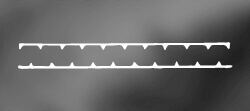 |
Taratarekae:From whale teeth. |
 |
Manaia:The manaia is known as a spiritual guardian, and carrier of supernatural powers. Traditionally depicted as a bird like figure with the head of a bird, body of a man and the tail of a fish it acts as a provider and protector over the sky, earth and sea. Likened to a bird sitting on your shoulder, looking after ones spirit, and guiding the spirit where it is supposed to go when the time comes. |
 |
Hei tiki:Commonly known as a good luck charm the tiki is also considered a symbol of fertility. Assumed to be clear thinking, perceptive, loyal and knowledgeable, the wearers strength is their character. The tiki is a talisman to the Maori people, and has been regarded as a good luck charm from the ancient times. The Maori believe the tiki represents the unborn human embryo. The most valuable tiki’s were carved from greenstone and were handed down through generations and treasured possessions. |
Kiri means Skin and Tuhi means Art , we generally tattoo the body and arm areas on our customers so it will be defined as Kiri Tuhi rather than Ta Moko was reserved for the face only.
The Process of Designing your Hand Crafted Maori Tattoo ( Ta Moko ) at Zealand Tattoo
We have a design process we go through with all our Clients. This begins with a Consultation with the Studio either in person or via email. This is where you can bring your ideas to the Artist and talk about a final concept for the piece.
Typically, the process for your tattoo is that you come in on the date/time of your appointment for a consultation with our artist to discuss the meanings you wish to incorporate in your design. The artist will then sketch a rough design which will show you the overall look of your design as well as highlighting your various meanings.
Artists Draft image after brainstorming with customer
The Freehand aspect at Zealand Tattoo that sets your Maori Tattoo design apart from the crowd
The Artist will then freehand the design onto your skin with Tattoo Marker Pens and ensure that all of your representations are built within the piece, in Traditional Maori Symbolism. This is done to complement the contours of your body. When you are totally happy with the overall look of your Design, then we will Tattoo it for you.
Artists handcrafting the freehand image directly onto the skin, and completing the Tattoo
What is Maori tattoo art?
The Maori are indigenous people that originated in New Zealand. They have a form of body art, known as moko but more commonly referred to as Maori tattooing. The art form was brought to the Maori from Polynesia and is considered highly sacred.
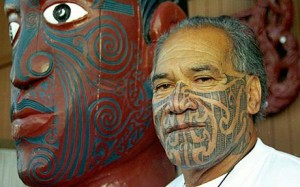
Ngapuhi Maori elder Kingi Taurua’s traditional facial tattoo (Photo: AFP)
Since the Maori people consider the head to be the most sacred part of the body, the most popular kind of Maori tattoo was the facial tattoo, which was composed of curved shapes and spiral like patterns. Often this tattoo covered the whole face and was a symbol of rank, social status, power and prestige.
For Maori, tattooing was (and for some, still is) a rite of passage, which meant it was highly revered and ritualised. The tattooing would begin usually during adolescence.
The great thing about Maori tattoos is that to this day, no two tattoos are alike. Maori tattoos are one of a kind. They are always highly intricate and detailed and display the craftsmanship and artistry of not only the artist but of the Maori culture.
The Maori tattoo artist is called the tohunga ta moko which means moko specialist. These tattooists are highly respected, and considered tapu which means inviolable or holy. Tohunga ta moko were mostly men, but there are a few women who take up the practice.
How did Maori tattoo art become popular?
The art of Maori tattoo was brought to New Zealand by the people of Eastern Polynesia in 1769 Captain James Cook. The word tattow itself was pegged as Cook’s adaptation of the native Tahitian word tautau. Captain Cook and Joseph Banks first saw the intricate tattoos of Maori tribesmen during their voyage to the South Pacific, and became fascinated and intrigued by it.
European explorers in New Zealand were very interested in the art of Maori tattooing and culture. Often Maori would take the tattooed heads of their enemies as trophies during war and kept them in ornate boxes as symbols of power, conquest and protections. Because Europeans made regular contact with Maori tribes, a group of missionaries later decided to study Maori and try to convert them to the ideals of Christianity. In 1814, taking with them a chief by the name of Hongi, the Europeans sailed back to England.
While Hongi was there he worked with an Oxford University professor to write a bilingual dictionary and translate the Bible into Maori language. He was granted an audience with King George IV and was presented with trunk loads of gifts as a reward for his evangelical efforts.
Hongi exchanged his gifts for a number of muskets and an ample supply of ammunition on the way home, in Sydney. Upon his return to New Zealand, he used the weapons to launch a series of raids against enemy tribes. The Maori later discovered that Europeans would actually trade tattooed Maori heads for weapons.
Soon, the Maori people would actually raid neighbouring tribes for the sole purpose of obtaining tattooed heads, which could be traded for guns and more ammunition. The traders then sold the heads to museums and private collectors in areas of Europe.
Desperate to obtain as many weapons as possible, the Maori would behead slaves and commoners who were captured in battle and tattoo their heads post mortem. Often, even heads of poor quality or those with unfinished tattoos were still offered for sale.
One of the most noted collectors of tattooed heads was Major General Horatio Robley, who in his lifetime acquired some 35 tattooed heads. Today, 30 out of the 35 heads in his collection can be found in the Natural History Museum of New York. Major General Robley also published a book; entitled Moko which gave extensive details on the process and meaning of Maori tattoo designs.
The Maori tattoo legend
The legend of Mataora

A less historical explanation of the origin of Maori tattoo can be found in the local legend which suggests that ta moko, the Maori tattoo, came from the underworld, called Uetonga. The legend states that there was a young warrior called Mataora, who fell in love with the princess of the underworld, called Niwareka. Niwareka came above ground to marry Mataora.
However, Mataora mistreated Niwareka, which in turn, made her return to the underworld. Mataora, sick with guilt about the way he treated his wife pursued her to the underworld, only to be greeted by her relatives who laughed at his ragged appearance and smudged face paint.
Mataora apologized before Niwareka’s family, and this act won Niwareka back. Before returning above ground, it was said that Niwareka’s father, the king of the underworld taught Mataora the art of ta moko. Mataora brought back these skills to his people and that was how the Maori came to have their distinct type of tattoo.
Maori tattoo is very complex
Maori tattoo traditionally does not involve the use of needles; rather the Maori used knives and chisels made from shark teeth, sharpened bone or sharp stones. The chisel, also called the uhi, was made from albatross bon although some were said to be made of iron. Knives and chisels were either plain and smooth or serrated, and these were used interchangeably depending on the intended pattern or design in the skin.
The inks that were used by Maori were made from all natural products. Burnt wood was used to create black pigments; while lighter pigments were derived from caterpillars infected with a certain type of fungus, or from burnt kauri gum mixed with animal fat. The pigments were then stored in ornate containers called oko, which became family heirlooms. Oko were often buried when not in use.
The black pigment that was made from burnt wood was reserved solely for facial tattoos; while those made from bugs or burnt gum was used for outlines and other less revered tattoos. Before the beginning the tohunga ta moko would study the persons facial structure to decide on the most appealing design. As mentioned before, no two Maori tattoos are alike.
Maori tattoo can be very painful
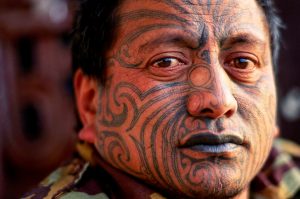 Having a Maori tattoo applied was a very painful experience. First deep cuts were incised into the skin and then the chisel was dipped into the pigment and tapped into the cuts. Another variation on this process involved dipping the chisel into the jar of pigment and inserting it into the skin by striking the end with a mallet. This manner of tattooing leaves the skin with grooves after healing, instead of the usual smooth surface left after needlepoint tattoos.
Having a Maori tattoo applied was a very painful experience. First deep cuts were incised into the skin and then the chisel was dipped into the pigment and tapped into the cuts. Another variation on this process involved dipping the chisel into the jar of pigment and inserting it into the skin by striking the end with a mallet. This manner of tattooing leaves the skin with grooves after healing, instead of the usual smooth surface left after needlepoint tattoos.
Maori tattoo was once a long and labour intensive process, because it was very painful only a few parts of the body were tattooed at a time to allow healing. There are two designs for the Maori tattoos – the normal design only involved the blackening of the lines whilst the second called for blackening the background and leaving the lines clear – this was called puhoro.
Maori tattoo is very sacred
Due to the sacred nature of the Maori tattoo, those who were undergoing the process, and those involved in the process, could not eat with their hands or talk to anyone aside from the other people being tattooed. Those who were receiving tattoos made it a point to not cry out in pain, because to do so was a sign of weakness. Being able to withstand the pain was very important in terms of pride for Maori people.
There were other rules and regulations around being tattooed, particularly while undergoing a facial work. Many Maori had to abstain from sexual intimacy while undergoing the rite, and had to avoid all solid foods. In order to meet these requirements, the person was fed from a wooden funnel to prevent foodstuffs from contaminating the swollen skin. A person would be fed in this manner until the facial wounds had fully healed.
Because the face was often bleeding and very swollen, the leaves of the karaka tree were often used as a balm that was applied after the session had finished, to hasten the healing process. The tattooing was often accompanied by music, singing and chanting to help soothe the pain.
The main focus
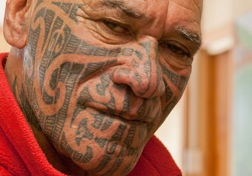 The focal point of Maori tattooing was generally the face. Men had full facial tattoos, while women only had their chin, lips and nostrils tattooed. Some Maori also had other parts of the body tattooed, such as their back, buttocks and legs. Women were more often known to tattoo their arms, neck and thighs.
The focal point of Maori tattooing was generally the face. Men had full facial tattoos, while women only had their chin, lips and nostrils tattooed. Some Maori also had other parts of the body tattooed, such as their back, buttocks and legs. Women were more often known to tattoo their arms, neck and thighs.
Maori tattoo and social status
Only people of rank or status were allowed to have, and could afford to have, tattoos. A person who did not have any high-ranking social status, such as a slave, could not have a face tattoo. Those who had the means to get a tattoo but did not were seen as people of lower social status.
The Maori facial tattoo was not only seen as a sign of rank though, but was also used as a kind of identification card. For men, their face tattoo showed their accomplishments, status, position, ancestry and marital status. It is considered highly insulting to be unable to recognise a person’s power and position by his moko.
The male facial moko or tattoo is generally divided into eight sections of the face:
- The centre of the forehead called the ngakaipikirau, designated a person’s general rank
- The area under the brows, called ngunga, designated his position
- The area around his eyes and nose, uirere, designated his hapu, or sub-tribe rank
- The area around the temples, uma, served to detail his marital status, like the number of marriages he had
- The area under the nose, raurau, displayed the man’s signature that was once memorised by tribal chiefs who used it when buying property, signing deeds and officiating orders
- The cheek area, or taiohou, showed the nature of the person’s work
- The chin area, wairua, showed the person’s mana or prestige
- Lastly, the jaw area or taitoto designated a person’s birth status
It can also be noted that a person’s ancestry is indicated on each side of the face. The left side is generally the father’s side and the right side the mother’s. Noble or note-worthy descent was a primary requirement before a moko was undertaken.
If one side of a person’s ancestry was not of rank, the corresponding side of the face would not have any design tattooed on it. And if the person undertaking the moko has no rank, or is not heir to anything of note then the centre of the forehead would be left without design.
Maori tattoo as art
By the mid 19th century, full facial moko for men declined in terms of frequency, but for women they persisted throughout the 20th century. Since the 1990s, Maori tattooing has experienced resurgence, often being done with the use of modern machines.
Since tribal-patterns of tattoo grew in popularity in the late 1990s, early 2000s, more and more non-Maori are copying designs and incorporating in their own art. Since then, more traditional Maori art has made a comeback and people are inserting their own meanings and themes into the more traditional art work.
Most of these modern Maori tattoos use needle-based machines, rather than the traditional tools and methods mentioned above.
Maori tattooing and tradition lives on
The Maori people have revived the old methods of tattooing in an effort to preserve their cultural heritage. Both men and women have now become involved in the traditional practice. The art organisation known as Te Uhi a Mataora was recently established by traditional Maori practitioners.
Te Uhi a Mataora envision the retention and further development of ta moko as a living art form. Their main concern is the growing practice of ta moko by non-Maori people. They strive to propagate the art form by reviving old traditions and preserving old methods and designs. They also inform others that Maori tattooing is a cultural symbol, and should not be taken lightly.
If you are a non-Maori who admires Maori artwork and tattooing and wants to have one done it is advisable to seek out a Maori tattoo artist with sufficient knowledge of ta moko. We have extensively experienced Maori artists here at Zealand Tattoo who are able to design you a custom, yet traditional, Maori design that is respectful and in honour of traditional Maori.
Maori designs and meanings
The design of Te Ora O Maui
This myth or legend outlines the idea that Maui was the last born out of five boys. When he was born his mother thought that he was a stillborn so she cut off her topknot, or bun, wrapped him in it and threw him out to sea.
Maui eventually washed up on the shore and was found by a tohanga who brought Maui up and taught him many important things like how to live off the resources of the land and the transformation into birds.
Maui learnt many techniques very quickly and became an expert at everything he learned, particularly the art of navigation. Maui achieved a great many accomplishments in his lifetime such as the slowing down of Tama Nuitera and giving the world longer days, obtaining fire from Mahuika or the God of Fire and almost securing immortality for all man kind from the maiden of the great darkness, Hine Nuitepo.
This Maori design represents Maui fishing up or discovering Aotearoa, the Maori name for New Zealand.
The design of Pikorua
The term pikorua is Maori for the growth and joining together of two different things e.g. the earth and the sea.
Some iwi (tribes) believed it wasTangaroa and Papatuanuku who were together in the beginning. Maori people believe that we came from Mother Earth and one day we go back to her, as the tattoo design depicts all rivers eventually lead to the ocean.
So it is believed that in life, we all take different paths and there are many different bends that we all end up in the same place. This Maori tattoo is a representation of life and journey that it takes.
The design of Nga Hau E Wha
This tattoo design is a representation of the four corners of the earth and nga hau e wha – the four winds.
Tawhirimatea and Tangaroa are two Maori gods or Atua have the power to destroy anything in their path and they have done so on many occasions. No matter what your beliefs in life may be, this still applies to all mankind. It’s all about respecting what God has given us, regardless of how big or small you are.
Aotearoa, is a place for all people of all races and creeds. Tamanuitera represents new growth and warmth and Hei Matua is strength and prosperity in whatever you desire to do and koru is a continuation of all of these things.
The design of Te Timatanga
According to the Maori, in the beginning there were Rangi and Papa and they had many children. As the children grew older they needed more room to move.
One day, Tumatauenga decided he wanted to part his parents, this would allow them to have light and also they could move around freely. All of the Gods and brothers tried to part with their parents with the exception of Ruaumoko who was a baby in his mothers womb together with Tawhirimatea, who opposed the idea. Firstly, Tumatauenga tried and failed and finally it came to Tanemahuta who was successful.
Tawhirimatea who opposed went to live with his father and he periodically punishes his brothers with storms. In addition, there was Ruamoko who still resides with his mother and from time to time he also punishes Tana with his earthquakes.
Despite the little amount of information that we have on the origins of the Maori tattoo, it has a rich recorded history. Several books have been published about the subject of Maori tattoos since the first time European’s saw it. The books, such as those my the aforementioned Major General Robley as well as Michael King and John Rutherford have helped in preserving the significance and interest in Maori tattoos. The lack of definite origins seems to add more mystique to this already captivating form of early art. Perhaps it is that mystery which has made the Maori tattoo endure.
Common Stand-Alone Maori designs
 |
Koru (spiral):The koru depicts new beginnings, growth and harmony, taken from the symbolism of an unfurled fern leaf. New Zealand has some of the most beautiful ferns in the world. |
 |
Hei matau (fish hook):The Maori symbols or meaning or hei matau, more commonly known as the fish hook symbolises prosperity. Maori use fish in many of their traditional food dishes. Fish were so plentiful to the Maori that the simple ownership of a fish hook meant prosperity. The fish hook also represents strength, determination and good health, as well as providing safe journey over water. |
 |
Single twist:The Maori symbols or meaning for the single twist represents the path of life, it is the symbol of eternity. The single figure eight is different than the double and triple twists mentioned below. |
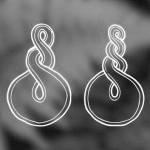 |
Double or triple twist:These twists represent the joining together of two people, or two cultures for eternity and even though they may experience life’s up and downs they remain bonded by friendship and loyalty for life (a favourite of the Maori symbols). |
